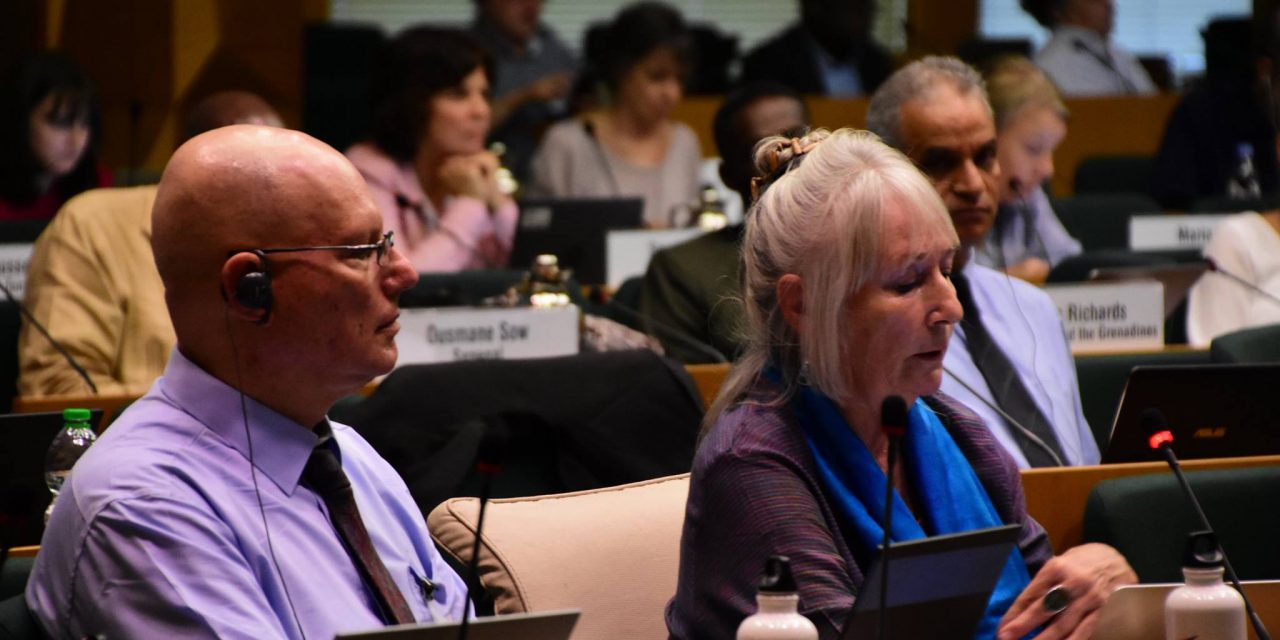As reported by the Intercept, an internal study by DuPont found higher than expected number of kidney and other types of cancers in male workers at one of its factories in the US.
Here is a key document: Cancer Incidence and Overall Mortality Rates
“Thank you Madam Chair, my name is Mariann Lloyd-Smith, from the international public interest NGO, IPEN but I will also give this statement on behalf of numerous communities who have lost their health, homes and security due to this persistent, bioaccumulative and toxic chemical. Across USA, Sweden, Australia, China, Italy and others, PFOA has polluted communities and harmed residents’ health. Their story serves as a warning to this Committee because of the way an industry repeatedly manipulated science to deceive the regulators and the public.
For example, this week the Committee will be making decisions about PFOA persistency but internally, 3M knew PFCs such as PFOA were persistent in 1976. After performing its own studies, the company concluded, “perfluorinated compounds have rarely or never been shown to undergo natural degradation.” They kept this information to themselves and proceeded with production. Publicly, 3M described the product as a, “groundbreaking, invisible wonder.”
The industry has also known since at least 1961 that PFOA is toxic.
DuPont did not disclose to regulators or the public, the results of an in-house studies that found birth defects among its workers’ children and in 2005, they were fined $16.5 million for failing to report the birth-defect findings and other data to the US EPA.
This week, POPRC may hear claims that the chemical has been used for over 50 years with no effect on workers but Dupont’s own internal documents released through the US courts, have shown that is not true – and that the company had documented elevated rates of certain cancers, including kidney cancer in workers and had known that exposed workers suffered more frequently from endocrine disorders.
Many years later, independent studies have confirmed these links and shown that PFOA exposed residents have suffered increased risk of kidney as well as testicular cancers, and women with higher levels of PFOA have higher risk of the endocrine disorder, Polycystic Ovary Syndrome (PCOS).
In 2004, DuPont was forced to settle a massive class-action covering 80,000 people affected by PFOA contamination of their drinking water, something that the company had covered up since 1984. Importantly, the settlement included the establishment of a health project to collect medical information on this exposed population; 69,000 people took part. After 8 years, based on that extensive health investigation, the C8 Science Panel completed its work concluding likely connections to six diseases including ulcerative colitis, high cholesterol, pregnancy-induced hypertension, thyroid disease; testicular cancer and kidney cancer.
There are now 1000s of residents pursuing legal action; in fact, there are currently 3,500 personal injury claims against DuPont alone. Earlier this year, in one of the first personal injury cases, DuPont was found responsible for a man’s testicular cancer and ordered to pay $5.1 million in associated damages. Furthermore, the court found Dupont committed actual malice meaning that they had “knowledge that the information was false”.
As the POPRC deliberates on the adverse impacts of PFOA and PFOA related chemicals, you may hear arguments that the human health impacts are still unknown or inconsistent despite the wealth of evidence to the contrary. While POPRC deliberates on the science around this chemical, many more affected residents will be fighting for justice against an industry who lied and deceived and against those who stood by and did nothing.
The POPRC’s year-long process has acknowledged that PFOA-related compounds including fluorotelomer alcohols, fluoropolymers and fluorotelomer-based polymers are responsible for degrading into PFOA, a fact that even 3M acknowledges.
The breakdown of these precursor products has spread PFOA contamination into every aspect of peoples lives from non stick products in the kitchen to dental floss to the sport’s products intended to keep us healthy. The Risk Profile on PFOA must include action on the full suite of PFOA related compounds.
So to conclude, this week the eyes of the world are focused on the deliberations of the POPs Review Committee as never before. We urge the POPs review committee to consider the industry’s track record of deception, to reject the deniers and to reject arguments based on 1 or 2 industry based reviews. We urge you to stay true to the Stockholm Convention’s mandate of protecting human health and the environment of communities against this most toxic of chemicals. As PFOA never breaks down, the decisions made here in Rome this week, will impact on the world’s peoples for centuries to come, so please make them the right ones.”
Download NTN’s report: The Persistence and Toxicity of Perfluorinated Compounds in Australia




